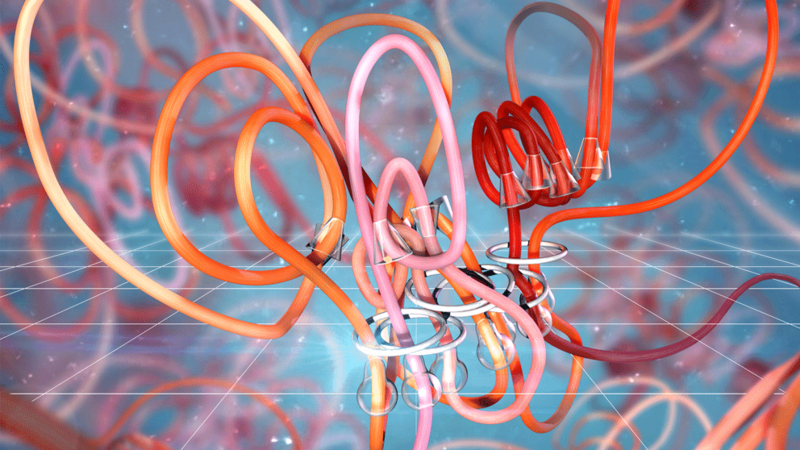JAX Genomic Medicine receives $3.7 million federal grant to develop a new system for understanding the 3D genome
Article | October 12, 2015
A five-year, $3.7 million grant was awarded to The Jackson Laboratory for Genomic Medicine to fund research into how the human genome is organized in the nucleus of the cell.
Composed of DNA, the genome in a single cell would stretch to more than six feet in length if extended. Instead it is intricately looped and physically packed into microscopic nuclei. This three-dimensional (3D) structure is thought to play many important roles in genome regulation and function.
The grant is part of the 4D Nucleome program, supported by the National Institutes of Health’s Common Fund to investigate nuclear organization in space and over time (the fourth dimension, or 4D).
The team, comprised of researchers from JAX, the Lawrence Berkeley National Laboratory, the Broad Institute and the National Institute of Arthritis and Musculoskeletal and Skin Diseases, will develop a comprehensive, high-resolution mapping program that will deliver complex interaction network maps that can provide insight into the dynamics of individual genomic elements in the context of 3D genome structures.
Called the Nucleome Positioning System (NPS), the program will comprise a genome-wide mapping technology platform, integrated computational modeling algorithms, cutting-edge nuclear imaging methods and advanced functional validation approaches. The resulting tools and mapping data will be made available to the larger research community and help establish the standards for future 3D/4D nucleome studies.
The grant provides $749,775 for the first year of research, and provisional funding for an additional four years.
Research reported in this publication was supported by the National Institute of Diabetes and Digestive and Kidney Diseases of the National Institutes of Health under Award Number U54DK107967. The content is solely the responsibility of the authors and does not necessarily represent the official views of the National Institutes of Health.
